#artemis ii
Text
does it ever drive you crazy

just how fast the night changes
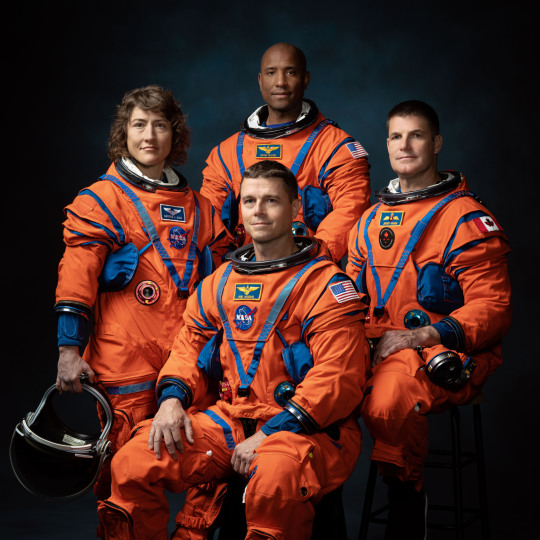
#nasa#space#science#astronomy#moon mission#moon#lunar mission#space exploration#apollo#apollo program#artemis#artemis 2#apollo 8#artemis II#jim lovell#bill anders#frank borman#christina koch#reid wiseman#victor glover#jeremy hansen
607 notes
·
View notes
Text
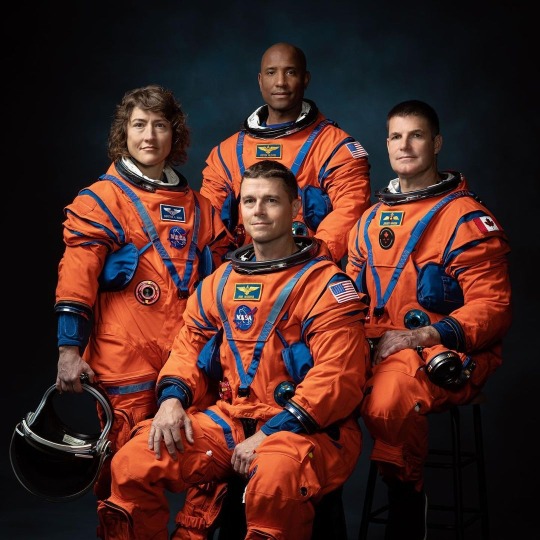




Meet the crew of NASA’s Artemis II mission, the next astronauts to fly around the moon:
Christina Koch visited the International Space Station in 2019, where she took part in the first all-woman spacewalk. She began her career as an electrical engineer at Goddard Space Center.
Jeremy Hansen was a fighter pilot before joining the Canadian Space Agency (CSA), and currently works with NASA on astronaut training and mission operations. This will be Hansen’s first mission in space.
Victor Glover is part of our 2013 class of NASA Astronauts and was the pilot for NASA’s SpaceX Crew-1 mission. He’s logged 3,000 flight hours in more than 40 different aircraft, and will pilot Orion around the Moon.
Reid Wiseman lived and worked aboard the ISS as a flight engineer in 2014. He also commanded the undersea research mission NEEMO21, and most recently served as Chief of the NASA Astronauts.
#congrats and best of luck to our crew 💙💙💙#NASA#artemis ii#astronauts#christina koch#jeremy hansen#victor glover#reid wiseman
291 notes
·
View notes
Text
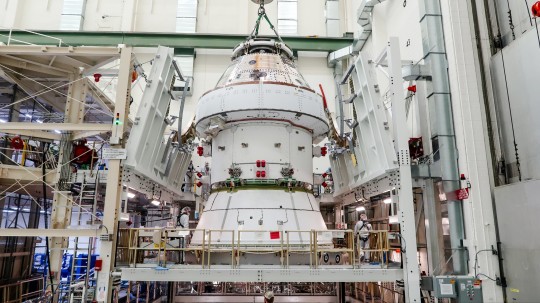
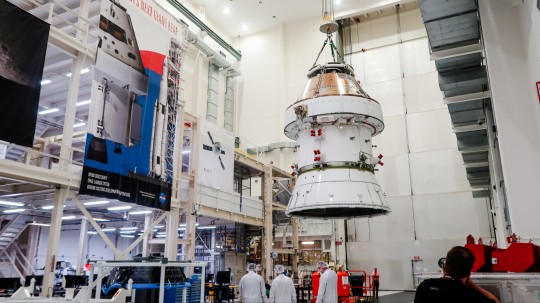

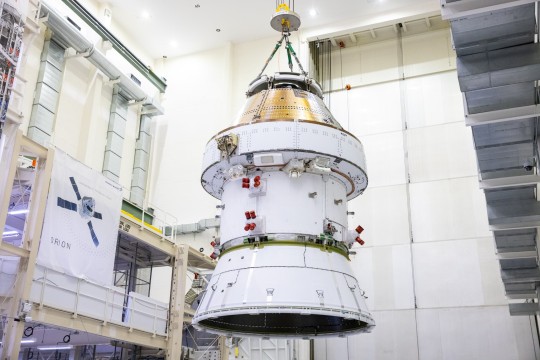
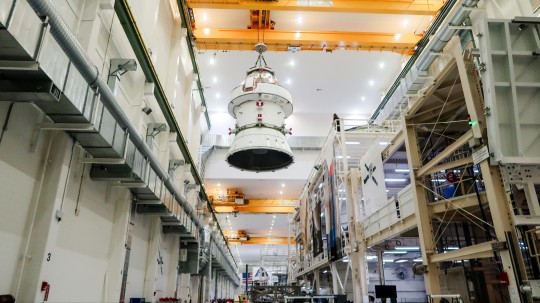

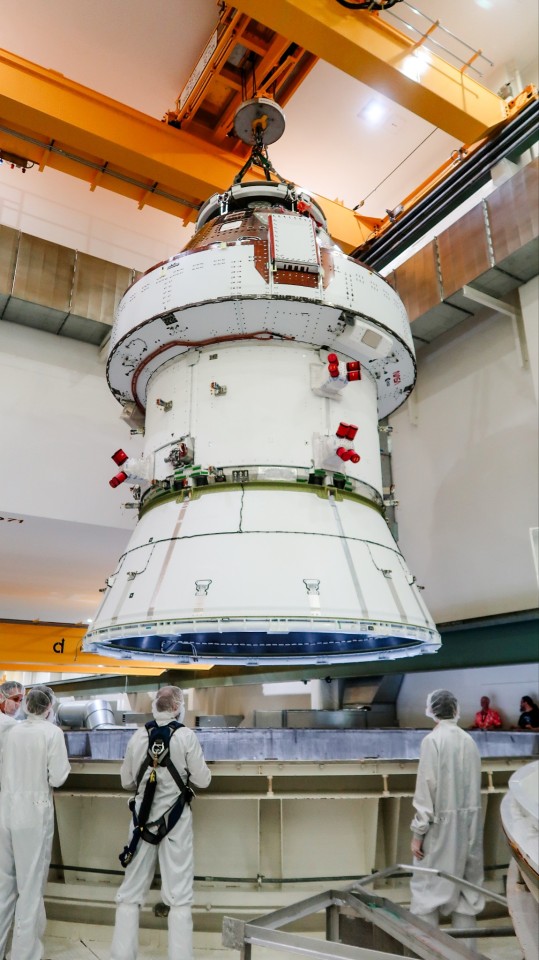
"A team lifts the Artemis II Orion spacecraft into a vacuum chamber inside the Operations and Checkout Building at NASA's Kennedy Space Center in Florida, where it will undergo electromagnetic compatibility and interference testing."
Photo credit: Amanda Stevenson and Isaac Watson
Date: April 4, 2024
NASA ID: link, link, link, KSC-20240404-PH-ILW01_0293, link, link, KSC-20240404-PH-ILW01_0320, link
#Artemis 2#Artemis II#Orion CM-003#Orion Multi-Purpose Crew Vehicle#Orion MPCV#Orion#Artemis program#NASA#Neil Armstrong Operations and Checkout Building#OCB#Kennedy Space Center#KSC#Florida#April#2024#my post
36 notes
·
View notes
Text


Orion Crew Module for Artemis II | John Kraus
132 notes
·
View notes
Text
Jeremy Hansen is heading to the moon.
The 47-year old Canadian astronaut was announced today as one of four astronauts — along with Christina Koch, Victor Glover and Reid Wiseman — who will be part of NASA's Artemis II mission.
"For me, it's a bit unreal still," Hansen told CBC's Paul Hunter.
[...]
Artemis I was the first test of NASA's new mega-rocket — the Space Launch System (SLS) and its new crew capsule, Orion. Uncrewed, it launched in November on a 25-day mission around the moon that was deemed a success.
Artemis II is the second step in NASA's mission to return astronauts to the surface of the moon.
Full article
Tagging: @politicsofcanada
#cdnpoli#canadian politics#canadian news#canadian#canada#uspoli#NASA#jeremy hansen#space#moon#astronauts#artemis I#artemis II#space exploration
80 notes
·
View notes
Text
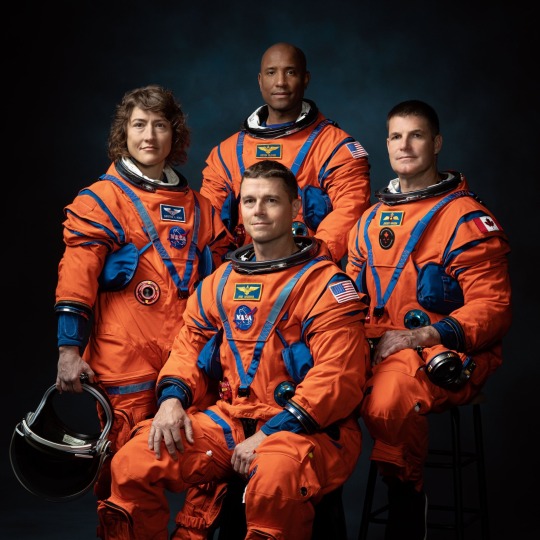
THEY’RE GOING TO THE MOON! Introducing the Artemis II astronauts:
Reid Wiseman, Commander
Victor Glover, Pilot
Christina Koch, Mission specialist
Jeremy Hansen, Mission specialist
Four astronauts will venture around the Moon on Artemis II, the first crewed mission on NASA's path to establishing a long-term presence at the Moon for science and exploration through Artemis.
👉🏿 https://nasa.gov/artemis-ii
60 notes
·
View notes
Text
Those who have travelled to the moon:
Neil Armstrong
Edwin Aldrin Jr.
Michael Collins
Pete Conrad
Dick Gordon
Alan Bean
Jim Lovell
John Swigert
Fred Haise
Alan Shepherd
Stuart Roosa
Edgar Mitchell
Dave Scott
Al Worden
Jim Irwin
John Young
Ken Mattingly
Charlie Duke
Gene Cernan
Ron Evans
Jack Schmitt
Soon, there will be more names on this list: Reid Wiseman, Victor Glover, Christina Hammock Koch, Jeremy Hansen
#apollo program#apollo xi#apollo xii#apollo xiii#apollo xiv#apollo xv#apollo xvi#apollo xvii#artemis program#moon landing day#july 20 1969#moon landing#we're going back#artemis ii
47 notes
·
View notes
Text
From the Moon’s south pole to an ice-covered ocean world, several exciting space missions are slated for launch in 2024
by Ali M. Bramson, Assistant Professor of Earth, Atmospheric, and Planetary Sciences at Purdue University
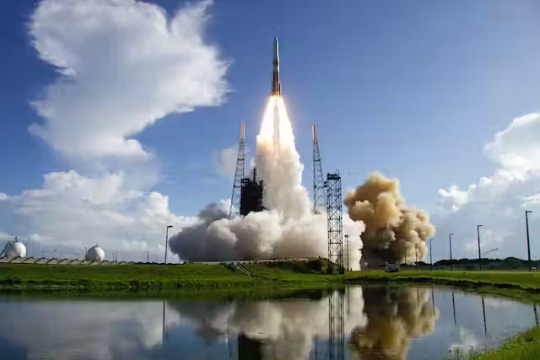
The year 2023 proved to be an important one for space missions, with NASA’s OSIRIS-REx mission returning a sample from an asteroid and India’s Chandrayaan-3 mission exploring the lunar south pole, and 2024 is shaping up to be another exciting year for space exploration.
Several new missions under NASA’s Artemis plan and Commercial Lunar Payload Services initiative will target the Moon.
The latter half of the year will feature several exciting launches, with the launch of the Martian Moons eXploration mission in September, Europa Clipper and Hera in October and Artemis II and VIPER to the Moon in November – if everything goes as planned.
I’m a planetary scientist, and here are six of the space missions I’m most excited to follow in 2024.
1. Europa Clipper
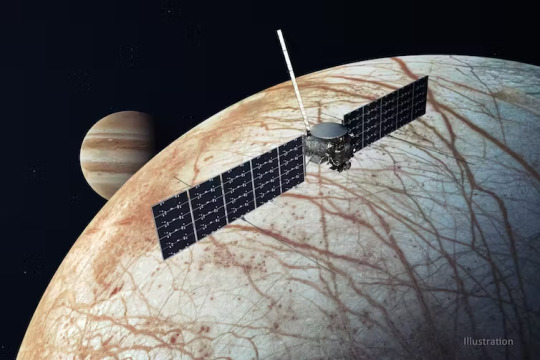
NASA will launch Europa Clipper, which will explore one of Jupiter’s largest moons, Europa. Europa is slightly smaller than Earth’s Moon, with a surface made of ice. Beneath its icy shell, Europa likely harbors a saltwater ocean, which scientists expect contains over twice as much water as all the oceans here on Earth combined.
With Europa Clipper, scientists want to investigate whether Europa’s ocean could be a suitable habitat for extraterrestrial life.
The mission plans to do this by flying past Europa nearly 50 times to study the moon’s icy shell, its surface’s geology and its subsurface ocean. The mission will also look for active geysers spewing out from Europa.
This mission will change the game for scientists hoping to understand ocean worlds like Europa.
The launch window – the period when the mission could launch and achieve its planned route – opens Oct. 10, 2024, and lasts 21 days. The spacecraft will launch on a SpaceX Falcon Heavy rocket and arrive at the Jupiter system in 2030.
2. Artemis II launch

The Artemis program, named after Apollo’s twin sister in Greek mythology, is NASA’s plan to go back to the Moon. It will send humans to the Moon for the first time since 1972, including the first woman and the first person of color. Artemis also includes plans for a longer-term, sustained presence in space that will prepare NASA for eventually sending people even farther – to Mars.
Artemis II is the first crewed step in this plan, with four astronauts planned to be on board during the 10-day mission.
The mission builds upon Artemis I, which sent an uncrewed capsule into orbit around the Moon in late 2022.
Artemis II will put the astronauts into orbit around the Moon before returning them home. It is currently planned for launch as early as November 2024. But there is a chance it will get pushed back to 2025, depending on whether all the necessary gear, such as spacesuits and oxygen equipment, is ready.
3. VIPER to search for water on the Moon
youtube
VIPER, which stands for Volatiles Investigating Polar Exploration Rover, is a robot the size of a golf cart that NASA will use to explore the Moon’s south pole in late 2024.
Originally scheduled for launch in 2023, NASA pushed the mission back to complete more tests on the lander system, which Astrobotic, a private company, developed as part of the Commercial Lunar Payload Services program.
This robotic mission is designed to search for volatiles, which are molecules that easily vaporize, like water and carbon dioxide, at lunar temperatures. These materials could provide resources for future human exploration on the Moon.
The VIPER robot will rely on batteries, heat pipes and radiators throughout its 100-day mission, as it navigates everything from the extreme heat of lunar daylight – when temperatures can reach 224 degrees Fahrenheit (107 degrees Celsius) – to the Moon’s frigid shadowed regions that can reach a mind-boggling -400 F (-240 C).
VIPER’s launch and delivery to the lunar surface is scheduled for November 2024.
4. Lunar Trailblazer and PRIME-1 missions

NASA has recently invested in a class of small, low-cost planetary missions called SIMPLEx, which stands for Small, Innovative Missions for PLanetary Exploration. These missions save costs by tagging along on other launches as what is called a rideshare, or secondary payload.
One example is the Lunar Trailblazer. Like VIPER, Lunar Trailblazer will look for water on the Moon.
But while VIPER will land on the Moon’s surface, studying a specific area near the south pole in detail, Lunar Trailblazer will orbit the Moon, measuring the temperature of the surface and mapping out the locations of water molecules across the globe.
Currently, Lunar Trailblazer is on track to be ready by early 2024.
However, because it is a secondary payload, Lunar Trailblazer’s launch timing depends on the primary payload’s launch readiness. The PRIME-1 mission, scheduled for a mid-2024 launch, is Lunar Trailblazer’s ride.
PRIME-1 will drill into the Moon – it’s a test run for the kind of drill that VIPER will use. But its launch date will likely depend on whether earlier launches go on time.
An earlier Commercial Lunar Payload Services mission with the same landing partner was pushed back to February 2024 at the earliest, and further delays could push back PRIME-1 and Lunar Trailblazer.
5. JAXA’s Martian Moon eXploration mission
youtube
While Earth’s Moon has many visitors – big and small, robotic and crewed – planned for 2024, Mars’ moons Phobos and Deimos will soon be getting a visitor as well. The Japanese Aerospace Exploration Agency, or JAXA, has a robotic mission in development called the Martian Moon eXploration, or MMX, planned for launch around September 2024.
The mission’s main science objective is to determine the origin of Mars’ moons. Scientists aren’t sure whether Phobos and Deimos are former asteroids that Mars captured into orbit with its gravity or if they formed out of debris that was already in orbit around Mars.
The spacecraft will spend three years around Mars conducting science operations to observe Phobos and Deimos. MMX will also land on Phobos’ surface and collect a sample before returning to Earth.
6. ESA’s Hera mission

Hera is a mission by the European Space Agency to return to the Didymos-Dimorphos asteroid system that NASA’s DART mission visited in 2022.
But DART didn’t just visit these asteroids, it collided with one of them to test a planetary defense technique called “kinetic impact.” DART hit Dimorphos with such force that it actually changed its orbit.
The kinetic impact technique smashes something into an object in order to alter its path. This could prove useful if humanity ever finds a potentially hazardous object on a collision course with Earth and needs to redirect it.
Hera will launch in October 2024, making its way in late 2026 to Didymos and Dimorphos, where it will study physical properties of the asteroids.
7 notes
·
View notes
Text
Artemis II crew announced!




Mission Commander: Reid Weisman, Mission Specialist: Christina H. Koch, Pilot: Victor Glover, representing CSA: Jeremy R. Hansen
Crew announced 3rd April 2023.
Credit: @NASA
8 notes
·
View notes
Text

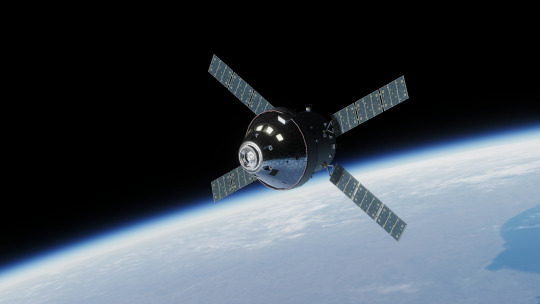

Orion's Reentry into Earth's Atmosphere
3 notes
·
View notes
Text
NASA Announces Astronaut Crew Who Will Return to the Moon in 2024
We’re going back to the Moon!
NASA’s Artemis 2 mission kicks off in 2024, and four astronauts will travel to the moon, perform a lunar flyby, and then return to earth.
While not as sexy as landing on the moon (happening in 2025), the flyby is still a hugely important step, a critical test flight of the systems. The astronauts chosen for the mission will be the first to make the journey since…

View On WordPress
5 notes
·
View notes
Video
youtube
Why We’re Going Back to the Moon - NASA’s Artemis II Moon Mission Astronauts
youtube
The Overview Effect: Seeing Earth with the Whole Universe in the Background
4 notes
·
View notes
Text

Orion Crew Modules for Artemis II, Artemis III, and Artemis IV
"The Orion spacecraft for NASA’s crewed Artemis II (right), Artemis III (left), and Artemis IV (center) missions are stationed next to each other inside the high bay of the Neil Armstrong Operations and Checkout Building at NASA’s Kennedy Space Center in Florida on June 22, 2023. Each capsule is in a different stage of production as technicians and engineers prepare the spacecraft to carry astronauts to and around the Moon on their upcoming flights."
Date: June 23, 2023
NASA ID: KSC-20230623-PH-MBR01_0001
#Artemis 2#Artemis II#Orion CM-003#Artemis 3#Artemis III#Orion CM-004#Artemis 4#Artemis IV#Orion CM-005#Orion Multi-Purpose Crew Vehicle#Orion MPCV#Artemis program#NASA#Neil Armstrong Operations and Checkout Building#OCB#Kennedy Space Center#KSC#Florida#June#2023#construction#my post
34 notes
·
View notes
Text

Artemis II crew in front of the spacecraft that will take them on a trip around the moon
#orion#spacecraft#artemis#artemis II#Reid Wiseman#Victor Glover#Christina Hammock Koch#Jeremy Hansen
143 notes
·
View notes
Text

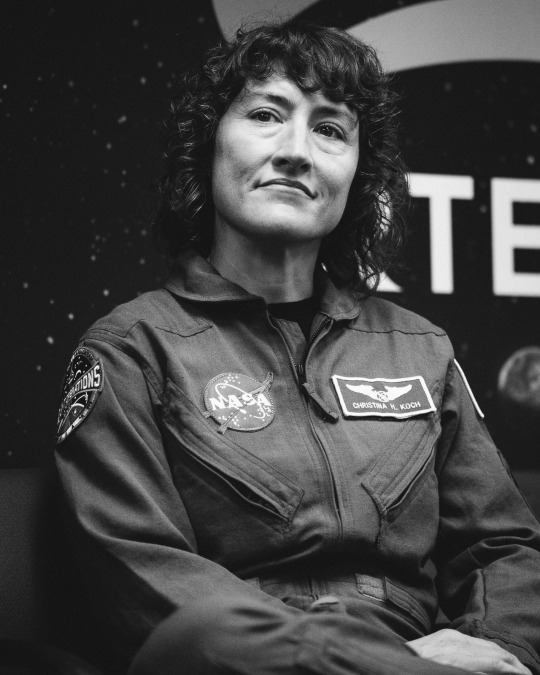
The four astronauts chosen to go to the Moon on the Artemis II mission: Christina Koch, Reid Wiseman, Victor Glover, and Jeremy Hansen.
NASA's Johnson Space Center, USA
#drowsteramericas#nasa#space#exploration#astronauts#johnson space center#artemis#moon#mission#artemis II#2#mars
2 notes
·
View notes
